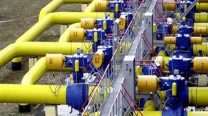Hydel, gas-based power production climbs
Hydroelectric power plants make largest contribution at 2,564GWh

Hydroelectric power plants make largest contribution at 2,564GWh.
PHOTO: FILE
Hydel power plants made the largest contribution to the total electricity production in the month at 2,564 gigawatt hours (GWh), which was 16% more than 2,212GWh in the same month of previous year, the National Electric Power Regulatory Authority (Nepra) reported.
Besides, its share in total power production rose to 34% in Nov 2018 compared to 31% in the corresponding month of last year, it added. Total power production surged 5% to 7,545.6GWh in Nov compared to 7,170.4GWh in the same month of last year.
Similarly, combined production from locally produced gas and imported liquefied natural gas (LNG) rose 15% to 2,812GWh compared to 2,448GWh. Their share in the energy mix surged to 37% compared to 34% in November 2017.
Separately, the contribution of locally produced gas to overall power production fell but it surged significantly in the case of LNG.
Taking water crisis into account, the shortage of water led to a decrease in cultivation of almost all major crops, including rice and sugarcane. This is expected to result in a slowdown of the agronomy growth this year.
Additionally, large-scale manufacturing industries in Sindh claimed that they were losing output worth Rs2.5 billion every day because of the absence of gas supply for the past 12 days. They have given a deadline to the federal government after which they will stage a shutterdown strike on Monday and hold protest outside the Governor House, Sindh.
Arif Habib Limited Head of Research Samiullah Tariq said hydel production increased after the addition of two new plants during calendar year 2018. “The new plants - Tarbela 4th extension project and Neelum-Jhelum hydroelectric power project - have added nearly 2,400 megawatts to the system this year,” he said. “Both newly added plants operate on a single flow of water.”
Capacity payments to inflate power production cost, consumer bills
Topline Securities’ analyst Syed Daniyal Adil said a better flow of water in dams had helped the country produce higher electricity from hydel projects.
At present, Water and Power Development Authority (Wapda) owns 21 hydel power stations with cumulative generation capacity of 9,389 megawatts.
Analysts added that production from gas-fired power plants surged notably after the country set up mega power plants on imported gas in Punjab and made the second LNG import terminal (Pakistan LNG Terminals Limited) operational which allowed additional import of gas at a time when the country, particularly its economy, needs cheaper and clean sources of energy.
The price Pakistan has to pay for power generation
Federal Minister for Petroleum Ghulam Sarwar Khan announced the other day that the government had given priority to producing most of the electricity from hydel sources while production from alternative energy sources (wind, solar and bagasse) had been placed at the second place in the energy mix.
Power production from the cheaper and clean energy source - LNG - has been given third priority, coal fourth and the most expensive furnace oil has been given last place.
Accordingly, the government minimised production from furnace oil to a nominal 5.7GWh (0.08% of the energy mix) in November compared to 648.5GWh (9.04%) in the same month last year.
Production from coal-fired power plants improved 8.5% to 1,044GWh compared to 962GWh last year. Their share in the total power production remained flat at 13%, according to Nepra.
Production from nuclear plants rose over 29% to 821GWh (11%) compared to 670GWh (9%) after addition of two new reactors in the recent past.
Production from alternative energy sources have slightly rises or fallen from wind, solar and bagasse.



















COMMENTS
Comments are moderated and generally will be posted if they are on-topic and not abusive.
For more information, please see our Comments FAQ